It's a versatile cartridge, runs well in ARs, and plenty have built hunting rigs around it. While it was built to be efficient in short barrels, loads vary, and there is still enough pressure to accelerate a bullet past the point it is all ignited. With 300 Blackout and its subsonic capability, people like to do cool things like use shorter barrels, say significantly less than 16 inches.
The bullet is gone just as things start to operate and pressure drops too soon. With the port closer to the chamber, there's a longer period of awesome pressure time between the time the gas reaches the port and the bullet leaves the barrel. Lotsa gas and plenty of time means reliable operation of the action.
The 10" has a pistol length gas system, the 16" has a carbine length gas system. I believe the port on the carbine length is sized differently . My understanding is adjustable gas blocks may be necessary when using different powders with subs. Of course I also had to work up the load so that they would operate the bolt and lock back, in addition to accuracy testing, but all factory loads operated both uppers, no problem. You can do a web search to find out what size gas port you need for your gas system length, different manufacturers use different sizes.
[/QUOTE]And no, i don't have specific data for each inch of barrel length and it's affect on velocity with supers. 300 blk was designed to be efficient out of short barrels, so it's a game of diminishing returns. With a .30 caliber bullet the barrel length at which you get diminishing returns is much shorter than most other rifle cartridges.
If your gun has a 16-inch barrel, a carbine length gas system should work just fine with supersonic and subsonic loads – especially if you use a silencer. Some rifle makers, like Noveske, use pistol length gas systems in their 16-inch barrels, which other makes use carbine length. If you are going to buy or build a short length barrel gun, less than 16 inches, do yourself a favor and choose a pistol length gas system. Here is the old barrel length again… Longer barrels have been proven to have better velocities and it depends on your burn rate on your powder whether you get the full use of your barrel. The AAC uses a similar weight and dimensional bullet as a 30BR and 20 inch barrels and longer are the standard for those highly accurate bolt guns. A 30BR pushes from 107 grains to 120 grain 30 cal projectiles.
The 30 BR is expected to shoot sub .5 MOA out to 300 meters and weight is at a premium for most of these guns. A lighter gun via barrel would allow more other things to be used. But shortening the guns usually has resulted in less accuracy. In the first paragraph, the author describes the .300blk round, and says "The round is tougher, stronger and flies further than 5.56mm NATO." Tougher? Yes, but to the main point… The .300blk does not fly farther than 5.56mm. The .300blk is basically a trimmed down 5.56mm case to accept 30 caliber bullets, over 200 gr.
It is filled with fast burning pistol powders to achieve rapid and complete burn in short barrels. Combine minimal case volume with overweight bullets, and you get "rainbow" like trajectories. The .300blk is effective up to 300yds, while 5.56mm is efective up to 500yds.
Even at those sub 10″ barrels I doubt the .300blk goes any further. Regardless, you do not choose .300blk for long range, it is designed to be a close quarters round for suppressed sbr's, that hits harder than 9mm or 5.56mm. We'll keep checking for Blackout subsonic and supersonic ammo that breaks the cost and performance barriers with a differing bullet weight and Full Metal Jacket.
Open tip bullets, hollow point alternatives, full metals jacket brass bullets, we got all the BLK ammo that handles bullet drop, as well as ammo for suppressed rifles and pistols. So sign up in the top bar to keep up with the latest info on availabilityu of blackout ammo and bulk ammo deals on hollow point ammo and firearms. That did more to spark interest in NFA items than anything. And adding a foot-long can to a full-length rifle is not optimal, particularly when you can push a 220 grain bullet to just under the speed of sound in six inches or so. If you build an AR pistol, the 300 is the perfect round. Its not going to be long until you want to suppress it and/or SBR it.
If you start with wanting a suppressed gun, you will eventually get to the 300. Since the paperwork and tax didn't kill you, and they already have your fingerprints, you're gonna want to SBR it. Any time you put a can on a rifle, an adjustable gas block will allow you to tune it. I came here for a clue about what barrel to get for a pistol build, but I know once I have it I'm going to want a real stock and a suppressor. Terminal performance testing on over 2000 Texas feral hogs and various game animals as large as 800 pounds has proven it to kill much more effectively than the 6.5 Grendel, 6.8 SPC, 7.62×39 or 300 Blackout. Due to the optimization of bullet weight to barrel twist, accuracy has proven to be outstanding.
Sub one-inch groups are the norm with multiple bullet choices for varying applications such as hunting, target shooting and tactical use. In a standard 5.56mm AR-15, cartridges perform within a relatively narrow band of performance. As a result, gas pressure performance is somewhat predictable and rifle makers can design gas ports to operate reliably. With the 300 Blackout, and its huge range of ballistic options, finding a gas system design that works with supersonic loads and bunny fart subsonic loads can be a real challenge. If too much gas is allowed, the supersonic rounds can create excessive wear and tear on the rifle. Too little and subsonic rounds may not generate enough gas to reliably cycle the action.
With 300 AAC Blackout gun design, there's a constant tradeoff between reliability and gas pressure. Start doing things like changing the barrel length and things get even crazier. I plan on building a 300 blk upper for deer hunting as it's more cost effective for me than buying a new bolt gun. I know people build 300blk guns because they are very quiet when shot with a suppressor. That's really not my thing and I'm only going to use super sonic rounds since it will be my deer upper. Since I'm putting the upper together my self I figured I'd build it to harness the maximum energy potential of the 300 blk round.
300 Blackout on the other hand is designed for slower velocities and the Barnes 110 grain Black Tips are excellent at expanding out of short barrels. Which leads us to range – In my opinion 300 blackout is best served as 300 yard max with supersonic ammo like the Barns and 100 yard with expanding subsonic. You need to do the work and research here to see if your preferred short barrel length will match those estimates. I know someone reading this has a gun that they can hit milk cartons at 800 yards with their blackout, I get it, but that is not the norm.
The 300 Blackout is an excellent mix of power, ballistics, and range. All of these qualities can be harnessed using the right barrel. The length directly affects the velocity of the projectile, accuracy, noise, and recoil of a weapon. While searching for a good 300 Blackout barrel, you must consider features such as material, contour, profile, length, gas system length, weight, and twist rate into consideration. A big advantage to the .300 Blackout is that it allows a user to use only one caliber while switching between barrier penetrating, subsonic, and supersonic ammunition all the same time. Accuracy is dependent on quality of the barrel, the barrel's rate of twist and compatibility of the bullet weight you envision using.
Most Wylde barrels have a 1/8 twist, which works well with pretty much all commonly-encountered bullet weights found in commercial and military 5.56mm munitions. The conundrum is getting enough velocity to stabilize the projectile to obtain the desired accuracy up to the planned maximum range of engagement. First off, there is no "explosion" with smokeless powder, it burns at a controlled rate. The hot flaming gasses are traveling at the same speed or slightly faster than the projectile, when they hit the still air at the muzzle, the collision causes the bang.
A suppressor does not "handle the explosion", it gives the gasses a place to expand and slow down to subsonic speeds. The next point is if you can't make an "ethical" shot on a game animal with subsonic ammunition, then why would you consider it for combat? All of this is basic physics, there is no magic when it comes to how gasses or projectiles act. No projectile/case option is ideal, they all have pluses and minuses and are a compromise in some way.
If you need to shoot a .30 cal then an AR-10 in .308 is the way to go with the trade off of more recoil and heavier ammunition. Most factory ammunition, both supersonic and subsonic, contains a powder charge that completely burns in a barrel between 9-10" long. There is no need for a .300 Blackout firearm to have a barrel longer than 10.5".
Longer barrels provide minimal muzzle velocity, but they add weight. Some weight can be beneficial to combat recoil, but a rifle that is too heavy is cumbersome. Then one day I was corresponding with Ron Reiber of Hodgdon Powder Company and he strongly suggested that we try their new CFEBLK powder.
To make this long story shorter, this ended up being a game changer and the final piece to the puzzle. It gave us improved accuracy and more velocity with less pressure allowing me to exceed my original velocity goals. Once I decided on a 1-15 twist rate for the barrels and we were good on ballistic performance and accuracy, all that was left was to decide on a name and test real world terminal performance. The 300 blackout delivers a large caliber bullet to the target with minimal noise and recoil. This results in more weapon control and faster reacquisition of the target in a multiple shot scenario. When correctly deployed this combination is the dream gun for law enforcement, the military in close quarter battle situations, as well as fast-paced, three-gun competition.
It can be shot from both short and long-barrelled firearms, and is considered an accurate choice in both subsonic and supersonic options. This lends itself well to home defense, hunting, and even performance competitions, such as a 3 gun match. Thus, knowing your rifling pattern in preparation of shooting is an important step to ensure you are choosing the best bullet for what you have. What length barrels are people running in their 300 BO bolt rifles? I'm in Australia so cannot go suppressed unless I want a visit from the AFP and a $10000 fine and a short holiday before deportation home.
Basis of the build is a Brno fox currently in 17 Mach iv and I am looking to set it up like Wingman's switch barrel cz527 I also want to have a play with a 6x45 or 250 myra in the future. Use of the rifle is hunting fallow deer with a relatively compact rifle mostly in bush blocks with the range not over 200 yards. Sticking with .308s for a moment, let's look at a cartridge whose performance and use depends heavily on barrel length and twist rate. Since 300 BLK is made to be fired supersonic or subsonic, suppressed or unsuppressed, it comes with a huge spread of grain weights.
Picking a twist rate will depend exclusively on what type of 300 BLK you chamber most often. In fact, depending on what twist rate you select, you may be able to shoot only supersorsubs, but not both. Barrel length directly affects the velocity of your cartridge. If your barrel's too short, the gunpowder in the shell casing won't have enough "burn time" to accelerate the round downrange, and your round won't reach optimal speed. This will result in the round dropping too quickly and/or being affected by wind drift more than it should.
Total effective range will be dramatically reduced, and you'll have less energy striking your target. A lack of energy is of particular concern in self-defense and hunting situations. If you are looking for a short pistol length barrel for your .300 Blackout AR-15, you'll want to take a close look at the Palmetto State Armory 10.5" CHF .300 Blackout pistol gas barrel. This barrel is hammer forged out of chrome moly vanadium steel and is also chrome lined on the inside of the barrel in order to extend its overall service life. The chrome lined barrel is considered to be military standard for this same reason. Of course, if you're handloading, you could probably get creative with powder selection and get more performance with a longer barrel, but it sounds like you want to keep it light and handy.
And no, i don't have specific data for each inch of barrel length and it's affect on velocity with supers. The 220 grain subsonic .300 Blackout goes at about 1010 feet per second with 500 foot-pounds of muzzle energy. This makes the .300 Blackout an effective, versatile, and reliable close combat round. The .300 Blackout also comes in a supersonic variant, which means once fired, the bullet travels faster than the sound barrier.
This high-speed feature means that the bullet will spend relatively less time in motion and thus less prone to the effects of elements like the wind. This demonstrates a distinct advantage in favor of .300 Blackout ballistics when fired from two of the most common barrel lengths for the modern M4 carbine – 14.5" and 9". Due to greater kinetic energy stored in the heavier .308" caliber projectile, the reduction in velocity does not affect hit probability to the degree it affects the 5.56x45mm cartridge.
Running the bbl with 762SDN6, MilSpec BCG, Carbine Buffer, & Spring. I built the upper as a dedicated suppressor host for subsonic ammo. The only ammo I've found so far that cycles the action is American Eagle 220gr Suppressor . Am continuing the search for more reliably ammo as I do not want to lighten the action components if I can find some preferred ammo. No gas in the face with any tested ammo while using Raptor-SD and cheap AIM Sports low profile gas block.
Good barrel, just keep in mind you may have to spend some time and money tinkering with different ammo unless you want to spend money on lighter action components. The design and profile of the barrel make it ideal for short range hunting and tactical applications. This is a heavy profile barrel, however, the length does reduce the weight by a considerable amount. The other consideration is that the sweet spot for 300 Blk is subsonic suppressed firing. That is where this gun really shines, and an 8.5 inch barrel keeps the overall length manageable once you have the suppressor added.
Although I am currently, and perhaps foolishly, waiting for Trump to get the hearing protection act passed , I hear that the 300 Blk is hollywood quiet when using subsonic ammo. Although that would come in handy sound wise inside a truck, it might prove too long for use inside the truck. I guess a truck rifle is ultimately intended for use outside the truck. Never had a truck rifle , but would if living Texas or Nebraska or rural Kansas. Just like barrel length, there is almost never a "best" twist rate for any caliber - unless you shoot one, single load within that caliber and you never chamber anything else. That's because calibers utilize different bullet weights for different applications, and the weight of the bullet in question is what determines an optimal twist rate.
For example, 5.56 NATO can be loaded with bullets weighing less than 50 grains, and up to 90 grains. No single twist rate will be universally optimal for all those different 5.56 variants. When choosing between 300 Blackout 1-8 or 1-7 twist rates, consider over-stabilization.
This usually happens when you shoot a bullet through a gun barrel with a faster twist rate than what's required for the particular bullet weight. The tradeoff for using subsonic ammo is that since the projectiles are heavier and travel at a lower velocity, they drop faster. A typical 190-grain subsonic bullet drops 4" at 100 yards, approximately 30" (2.5') at 200 yards, and about 96" (8') at 300 yards.
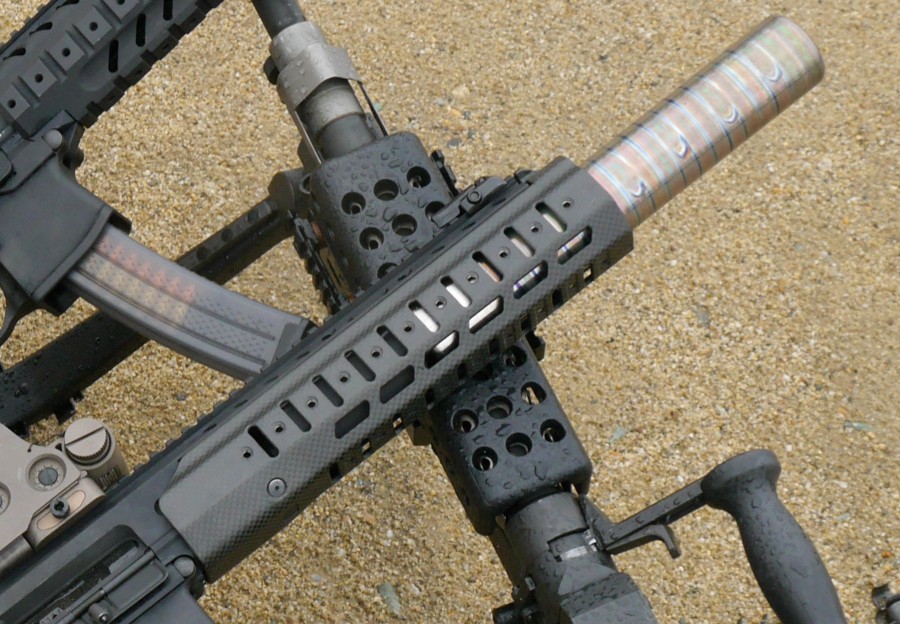
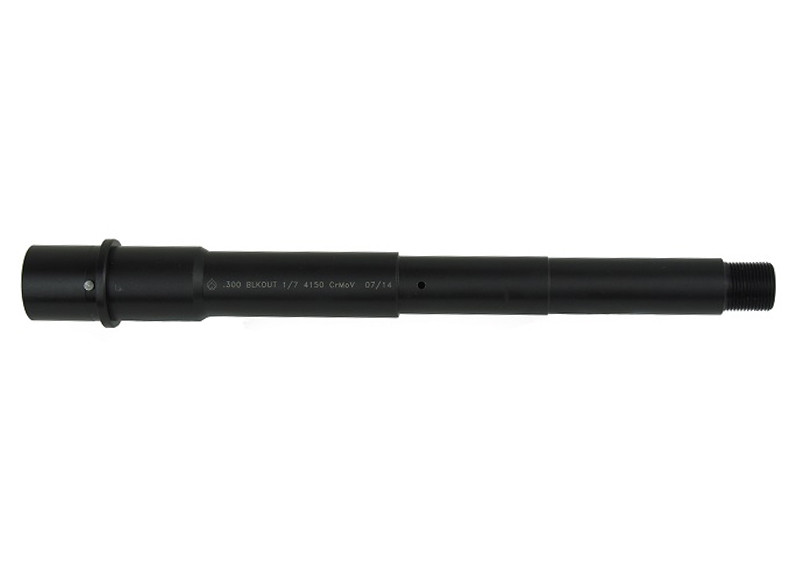
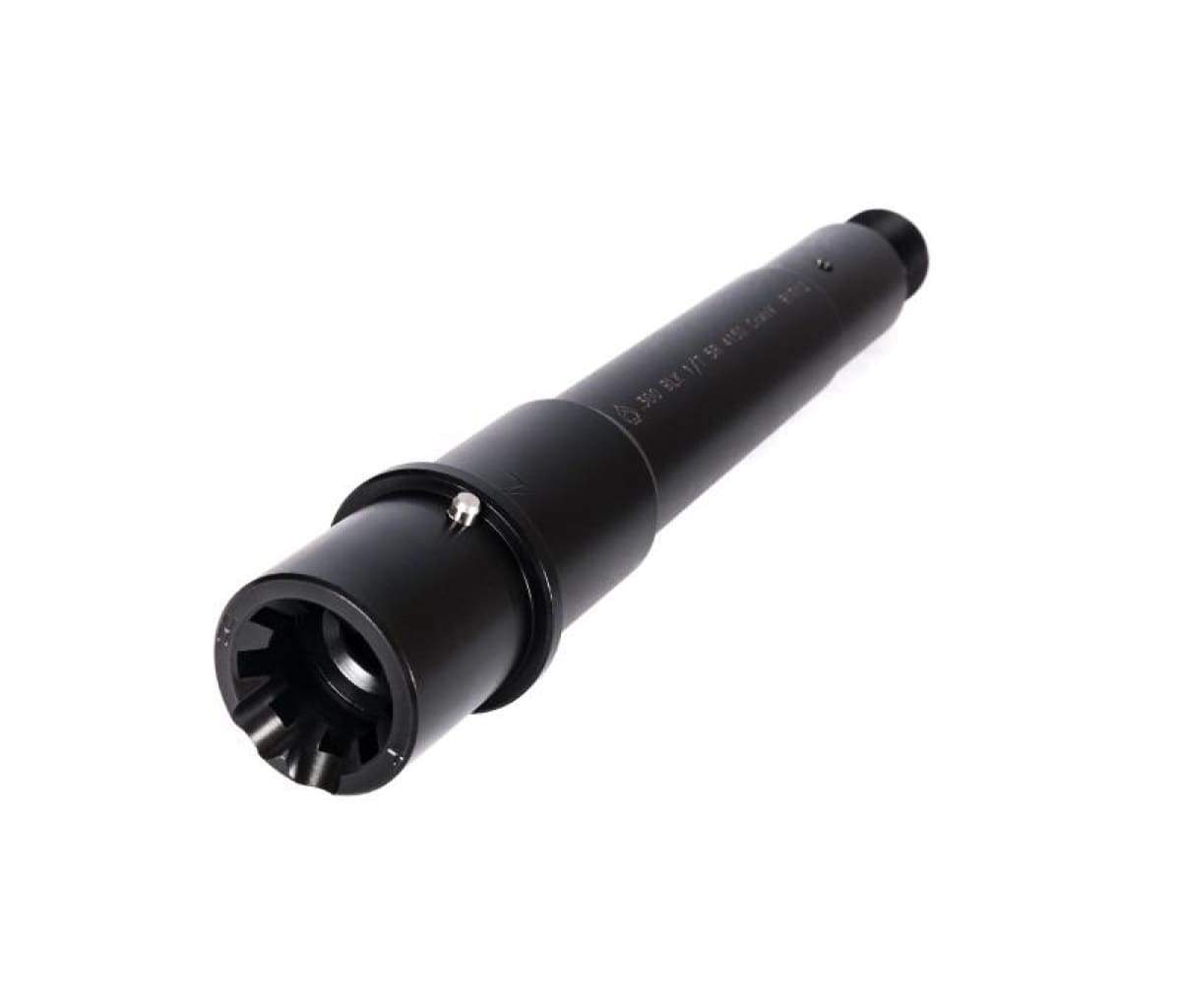



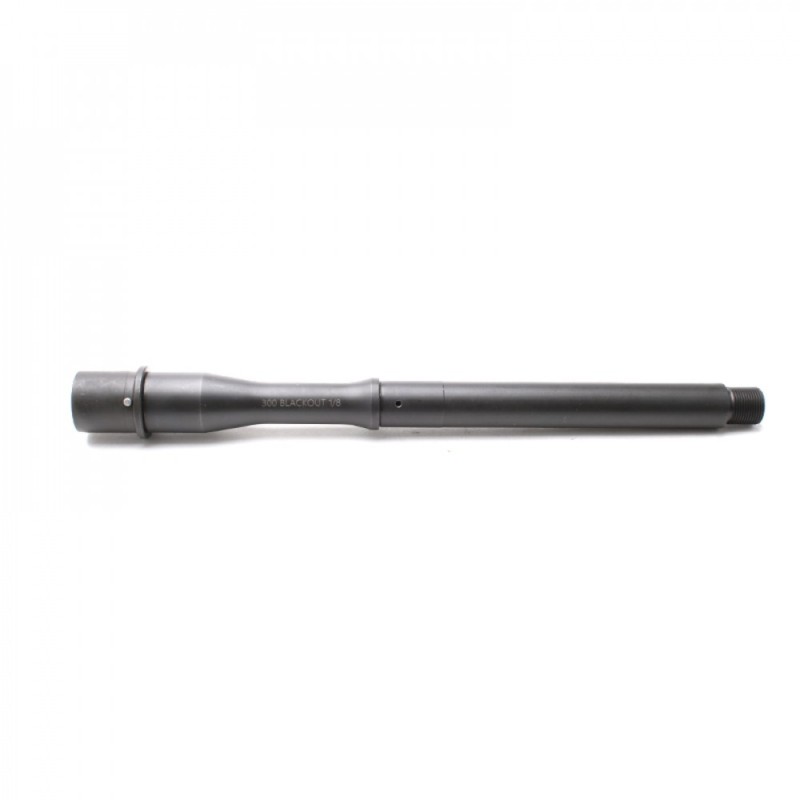







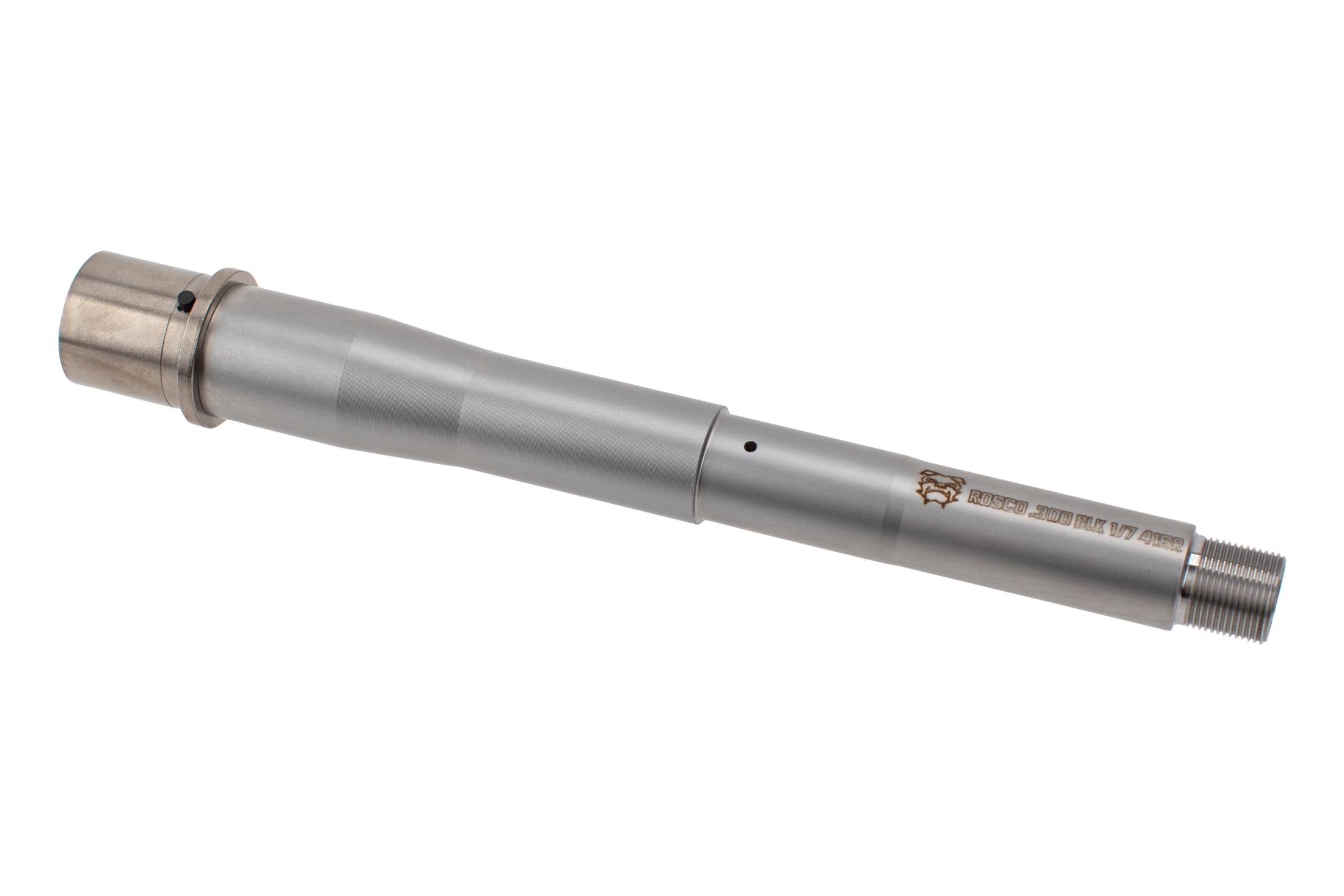












No comments:
Post a Comment
Note: Only a member of this blog may post a comment.